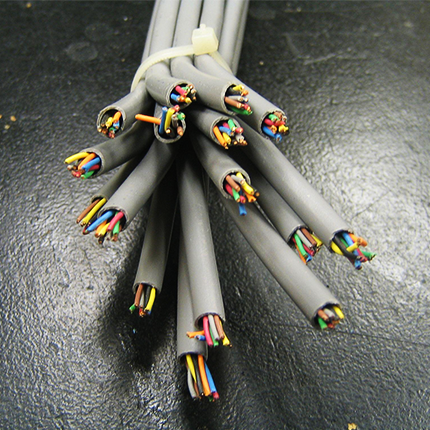Edit: I am trying to put linux on a compaq armada 1700.
I’m running antix on a Pentium 2 with 512mb ram and it’s performing quite nicely
This has 32mb
Spend $12 on this memory module and you’re g2g for almost anything.
i didnt see anyone mentioning puppy linux, its an option.
you might even be able to run a twm or openbox style GUI if you have enough ram.
With 32MB of RAM you can’t go far. The Linux kernel barely runs on it, and that’s just the kernel. NetBSD also has a minimum requirement of 32GB of RAM. One other thing you can do is try to run BeOS (not Haiku, but BeOS). It could run on 32MB of RAM (it still preferred 64 MB, but it could run on 32 too).
With 48 MB, you can, though. That’s what I booted 5.17 on a Pentium II with once to get a basic busybox terminal. I think I did an experiment once with qemu and found the minimum to be somewhere in the high 30s or low 40s.
Damn, NetBSD really upped their ram requirements 😂
Not Linux but Haiku would run on it I think.
As others have suggested, the only option I can think of is Tinycore but you’ll need to get the Microcore version (aka Core ISO with no GUI). This should run on 32MB RAM but leaves you very little headroom with a very barebones install, and obviously no GUI of any kind. [Source]
I looked up the Compaq Armada 1700 and saw that it came with 32MB soldered with one slot available to expand up to 160MB. It’s a long shot, but if you can find a working 32MB, 64MB or 128MB memory module for this you should be able to run TinyCore with a GUI. Adding more RAM would also open up options like Slackware.
It’s not clear to me if Debian will work or not, even with maxing out the RAM in this computer. There is a low memory install mode you could try but I think even that requires at least 256MB which is beyond the theoretical maximum this computer supports.
If all you want to do is prove to yourself that you can install Linux on this computer then Microcore might be worth a try. If you want a usable system with a GUI then you’re probably going to have to add more RAM.
This could be a long shot, but so long as you do NOT connect it to the internet, you could try sourcing a Linux distribution from back when this computer was released, I’m thinking Redhat Linux (before RHEL and Fedora was a thing) or Debian a very old version of Debian. However even if you do succeed in this it’s probably not going to be usable.
Good luck!
The Linux kernel works fine. How much ram do you have? I personally would build a custom image with buildroot.
Other option is Debian
32MB
I think that’s going to be more of a limitation than your CPU. Any chance of getting 256+ MB of ram?
The option is Debian.
NetBSD
Rule 1
Rule 1 applies to posts, not comments.
Overruled.
Won’t work with much hardware
Works with plenty of hardware, especially something that would run on such a platform.
I have found it to lack support for WiFi and video acceleration
You want wifi and video acceleration on a P2?
Intel Atom
That’s not what OP asked about.
Far enough
I just jumped the gun a bit
Debian from 1998.
Debian still supports Pentium IIs. They axed support for the i586 architecture (original Pentium) a few years back, but Debian 12 (current stable, AKA Bookworm) still supports i686 chips like the P2.
Not sure how the rest of the hardware in that Compaq will work.
See: https://www.debian.org/releases/stable/i386/ch02s01.en.html
gentoo. i’m not even gonna look this up but i’d be surprised if immolo hasn’t installed in that platform yet ;)
I wonder if there’s a Gentoo binpkg host for i486 specifically, since it might almost be practical then. (Or you could set up your own.)
I installed gentoo on a pentium D it took 5 days to compile and to setup, with distcc.
Why not cross-compile it?
Cause i wanted to see how long it would take
I did some similar stuff on a Raspberry Pi. I had to NFS mount my desktop and make a swapdisk on the NFS mount to have enough RAM to build. It wasn’t fast, but it did eventually work.
There was also a competition (long ago) to see who could build a computer that would successfully boot Windows 95. The goal was to boot the slowest possible time (no arbitrary delays allowed).
The winner wrote a shim that emulated a floating point unit of the i486 so it would boot on a i386 (no floating point). The result was… booting after many weeks. They won big time.
I have Tiny Core running on a PII 333MHz machine with 128MB of RAM
May I ask what you want to do with it?
I wanted to create an abomination, but it’s to old. I’ll have to “upgrade” to a newer machine.
@nichtburningturtle I run Arch Linux on a Pentium 2 E5300 and with some system tweaks like using Dwm/St, less than 1000 packages and args on some software it run smoothly.
not this P2, I think OP is talking about the P2 from 1997, I had a P2 266MHz and was running it at 300 (75x4), 32MB of RAM, 4GB HD, it was the shit in 97
Did you use an archlinux32 i486 iso?
@nichtburningturtle nah, amd64 official arch linux
Didn’t know there were 64bit pentium 2 cpus.
I can’t find anything to anything to support their assertion that a E5300 is a “Pentium 2”, but the chip is from 2008, so it’s not relevant to your situation. Maybe they meant it was a Pentium from the Core2Duo time, but that’s still not a “Pentium 2”.
Fli4l should. Back when it was new it was meant to fit on a floppy and run on 3’86 machines. It’s for running a home router.
Fli4l is still around?! Crazy. I used that back in 2002 or so to turn an old i386 with 3 ISA HP 100Mbit network cards into a router + fileserver combo. Good times.















